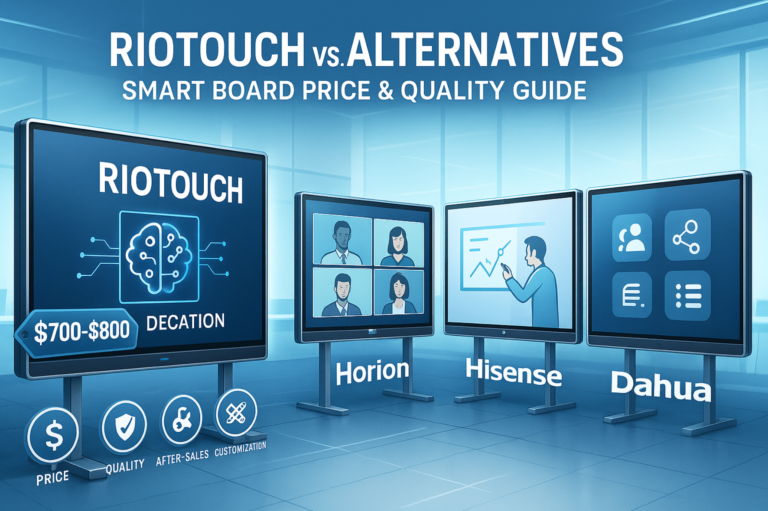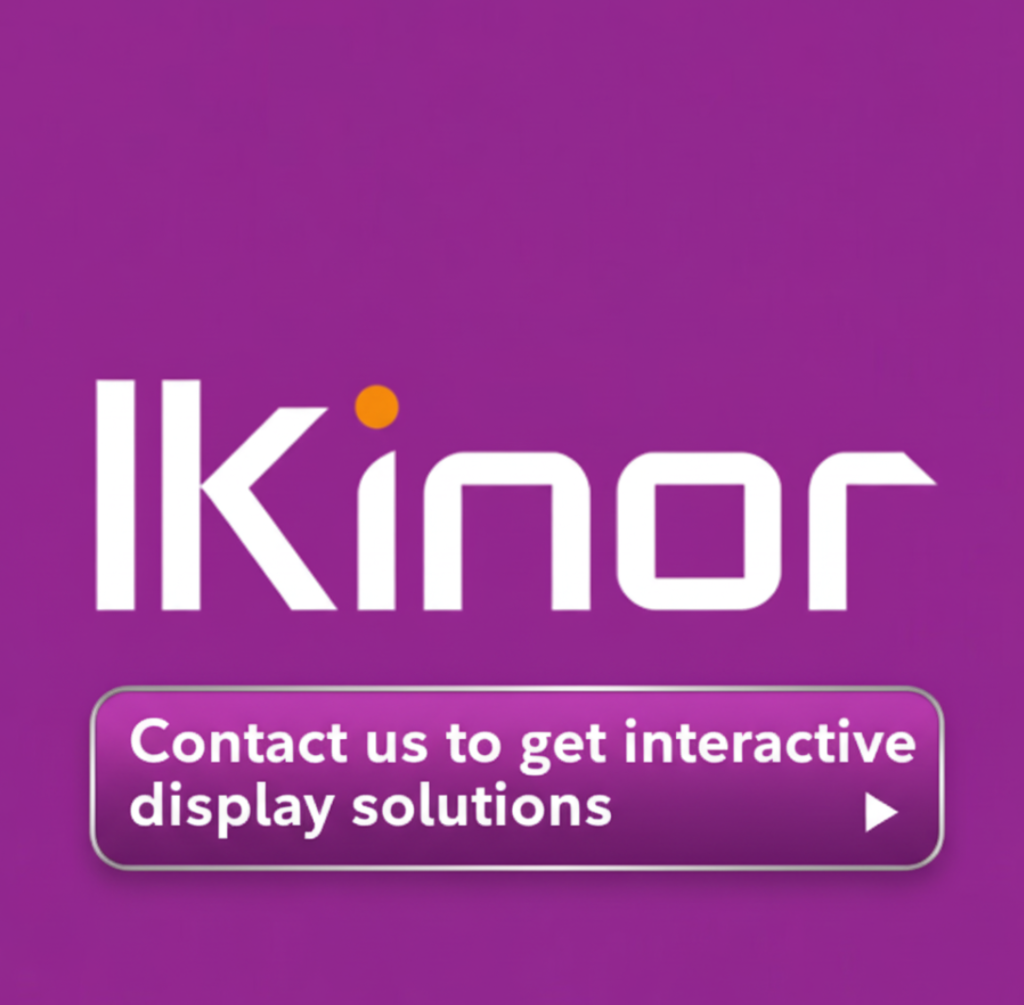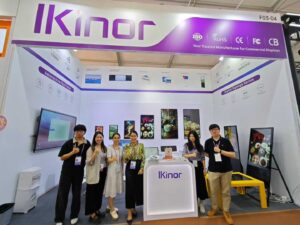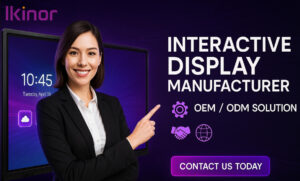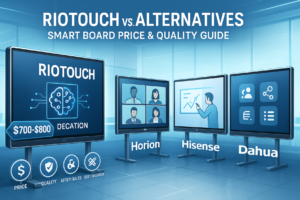As an interactive display brand from China, Riotouch has developed a wide range of smart board models in recent years, targeting both educational and business users. These interactive flat panels are known for their affordability and functionality, but many users still have questions about the actual Riotouch smart board price, performance, and long-term reliability. In this complete guide, we’ll explore everything you need to know about Riotouch smart boards — from their key features and price range to honest insights on quality. Additionally, if you are experiencing any issues with the Riotouch brand or are considering switching to a different supplier, we’ll also introduce several recommended smart board alternatives to help you make a confident decision.
Riotouch Interactive Display Overview
Riotouch is a Chinese brand specializing in interactive displays and smart board solutions for classrooms, conference rooms, and business environments. Over the past few years, the company has rapidly expanded its presence both domestically and internationally, offering a wide range of models that cater to different screen sizes, operating systems, and user requirements. From entry-level education boards to high-performance corporate touch displays, Riotouch’s lineup aims to meet the growing global demand for affordable yet functional interactive technology.
One of the main reasons Riotouch has gained strong visibility in the smart board market is its aggressive marketing investment and low-price strategy. By allocating substantial budgets to digital campaigns, exhibitions, and reseller partnerships, the brand successfully built awareness among distributors and schools across Asia, the Middle East, and parts of Europe. Combined with competitive pricing that undercuts many global brands, Riotouch quickly attracted attention from buyers looking for cost-effective alternatives to premium products such as SMART, ViewSonic, or BenQ.
However, while its pricing strategy has helped it capture market share, long-term brand reputation still depends on consistent quality and reliable after-sales service — key factors determining sustainable growth in the global interactive display industry.
How Much Does a Riotouch Smart Board Cost?
The typical EXW price for a Riotouch smart board falls between USD $700–$800, depending on the screen size and configuration. This range usually covers the mainstream models from 65 to 86 inches, featuring Android or dual OS systems. Prices may fluctuate slightly based on display panel quality, touch technology, CPU configuration, and the level of customization required by distributors. Additional costs such as freight, taxes, or software licenses can also affect the final landed price.
While this price point seems attractive at first glance, Riotouch’s current market competitiveness is limited. The brand does not possess a strong supply chain advantage—it neither owns a dedicated factory nor has deep manufacturing integration with upstream panel or component suppliers. As a result, Riotouch relies heavily on third-party assemblers, which leads to higher procurement costs and less flexibility in pricing.
When compared to larger Chinese smart board manufacturers such as Ikinor, Horian, or CVTOUCH, Riotouch lacks economies of scale and long-term production stability. These established brands benefit from in-house R&D, bulk component sourcing, and stronger logistics networks, enabling them to offer better cost control and faster after-sales response.
In summary, while Riotouch maintains an entry-level price bracket, its cost-performance ratio is no longer a significant advantage in today’s competitive interactive display market. Buyers seeking value and reliability may find better options from more vertically integrated Chinese manufacturers.
Is Riotouch Interactive Display Quality Good?
In general, the overall quality of Riotouch interactive displays is acceptable, especially considering their pricing tier and target market. The screens deliver reasonable brightness, smooth touch response, and decent performance for educational and meeting room applications. However, despite meeting the basic requirements of most entry-level users, there are notable quality concerns that potential buyers should be aware of.
One issue stems from the brand’s internal QC (quality control) system, which remains incomplete and inconsistent across production batches. In addition, certain batches have used electronic components and display panels that fall short of industry-grade specifications, leading to durability issues over time. This inconsistency affects long-term reliability, particularly for installations in high-usage environments such as schools or corporate meeting rooms.
Customer feedback also reflects these challenges. Importers from Southeast Asia and the Middle East have reported that Riotouch interactive displays sometimes experience operational faults shortly after delivery—often linked to local hot and humid climates that stress components not rated for such conditions. Moreover, software compatibility and adaptation are frequent complaints, especially when integrating with specific Android or Windows ecosystems.
Another growing concern is after-sales service. Over the past year, several clients have noted longer response times, limited spare part availability, and slow warranty processing. For international buyers, the lack of local technical support can significantly impact user experience and maintenance costs.
Therefore, while Riotouch offers decent functionality for its price range, buyers should carefully evaluate warranty coverage, local service options, and long-term support before making bulk purchases or deployments.
Riotouch RK3588 Interactive Display
The Riotouch RK3588 Interactive Display is promoted as the brand’s flagship smart board, designed for modern AI-driven classrooms and corporate collaboration spaces. Equipped with an 8nm octa-core RK3588 processor, it supports 8K ultra-high-definition visuals, responsive touch performance, and real-time collaboration features. The device integrates AI-based tools such as automatic lesson generation, online Q&A interaction, and OpenAI/ChatGPT access, aiming to create an immersive and intelligent teaching experience. It also offers practical hardware features including Type-C connectivity, HDMI, USB 3.0, NFC, and fingerprint login, providing convenience and secure access for teachers and professionals alike.
However, it is important to note that the Riotouch RK3588 product line is still in its early development stage, and many of the advertised AI applications remain relatively immature or unstable in real-world use. While the concept of AI-enhanced education is appealing, the software ecosystem and localized application support still require significant refinement to reach full commercial maturity.
In terms of user experience, early adopters appreciate the device’s processing power and 8K display quality but also point out issues with software stability and limited AI performance optimization. Overall, Riotouch’s RK3588 series demonstrates the brand’s ambition to move into AI-powered interactive display technology, yet it remains a work in progress that needs further iteration to compete with established manufacturers in the smart education sector
Best Alternatives to Riotouch Smart Board
If you’re considering switching from Riotouch or just exploring other options, here are several standout brands that serve as strong alternatives, each with its own strengths in price, quality, after-sales support, and customization.
1. Ikinor
Ikinor often leads the pack by offering a compelling blend of price and quality. Because Ikinor has a stronger in-house R&D and manufacturing setup, it can maintain cost control while delivering reliable panels, robust chassis, and mature firmware. After-sales support is relatively solid, and they support customization for software and hardware features.
2. Horion
Horion is known for building durable, education-oriented displays with good image quality and strong environmental tolerance. Their pricing is slightly higher than budget Chinese brands, but their after-sales reach, firmware stability, and localized service (in many regions) make them dependable for long-term deployments.
3. Hisense
A globally recognized electronics brand, Hisense brings brand reputation, broad supply chains, and solid component sourcing. Their smart board solutions tend to be more premium, with better panels and display technologies (e.g. higher contrast, brightness). The trade-off is higher initial cost, but buyers often justify it for reliability and brand assurance.
4. Dahua
While Dahua is more widely known in surveillance and security, their smart display offerings integrate nicely with security/monitoring ecosystems. Their displays often include features aligned with IoT integration. Their strength lies in cross-system compatibility and robustness, although their specialized focus means their display line may not be as polished as pure display brands.
Final Thoughts
When evaluating the overall price-performance ratio of Riotouch interactive displays, the brand delivers fair value at the entry-level range but struggles to maintain consistent quality and service compared with leading Chinese manufacturers. Riotouch can still be a reasonable option for small institutions or resellers seeking low initial cost, yet long-term reliability and after-sales assurance remain concerns for many international buyers.
It’s worth remembering that every buyer should build alternatives into their supply chain. Depending solely on one brand can easily cause delivery delays or inconsistent quality. Maintaining two or more trusted suppliers ensures production continuity and component stability—a key practice adopted by experienced distributors. If you want to understand this approach more deeply, check the China Smart Board Supply Chain Guide for insight into how multi-brand sourcing strengthens product consistency.
When choosing an interactive display supplier, focus on factory capability (own production lines, SMT assembly, QC system), component sourcing transparency, and after-sales infrastructure. Reliable manufacturers such as Ikinor or Hisense typically offer clearer warranty terms, better technical documentation, and stronger spare-parts pipelines. Ultimately, your best choice depends not only on unit price but on who can deliver stable quality, responsive support, and long-term partnership value across your regional distribution network.

